Volunteer Park, Seattle, Washington
At the entrance of the shortest day is its exit. In a time in love with sight, summer is supreme, but what about winter? What is the vision of the other senses? What if you were to see with your tongue or hands or hearing? What can we learn from creatures who live and thrive in what we think of as darkness? How do auroras, incandescence, witch's butter, phosphorescence, photoluminescence, night lights, neon signs, jellyfish and fireflies do it? According to the Inner Classic of Chinese Medicine, "the forces of winter create cold in Heaven and water on Earth, and the kidneys (which open to the ears) and the bones within the body." In this two-hour outdoor workshop we'll traverse the threshold of the winter and find our own unique paths and vocabularies for meeting the darker, longer days and the flash of brightness they bookend. We'll do this through writing and simple movement exercises meant to amplify the vision of the senses other than sight, especially our marrow and bones, and our ears and inner ears (aka the kidneys). We'll befriend the solstice and tap into the collective imagination. I'll bring the hand and foot warmers.
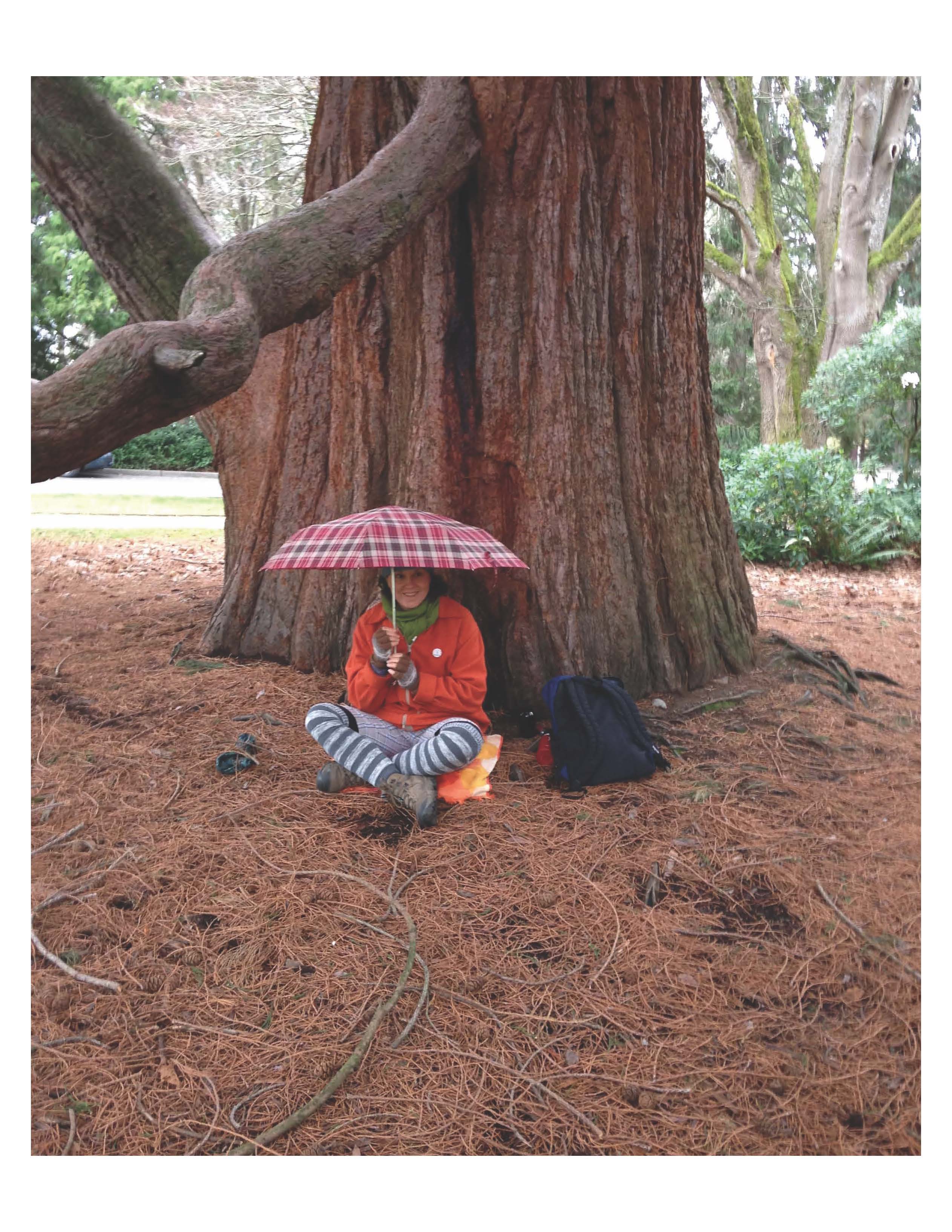
*
SUMMER SOFT DOG DAYS : the inner life of languish
Discovery and Volunteer Parks, Seattle, Washington
August,
The opposing
of peach and sugar,
and the sun inside the afternoon
like the stone in the fruit.
The ear of corn keeps
its laughter intact . . .
- Federico Garcia Lorca (trans. by James Wright)
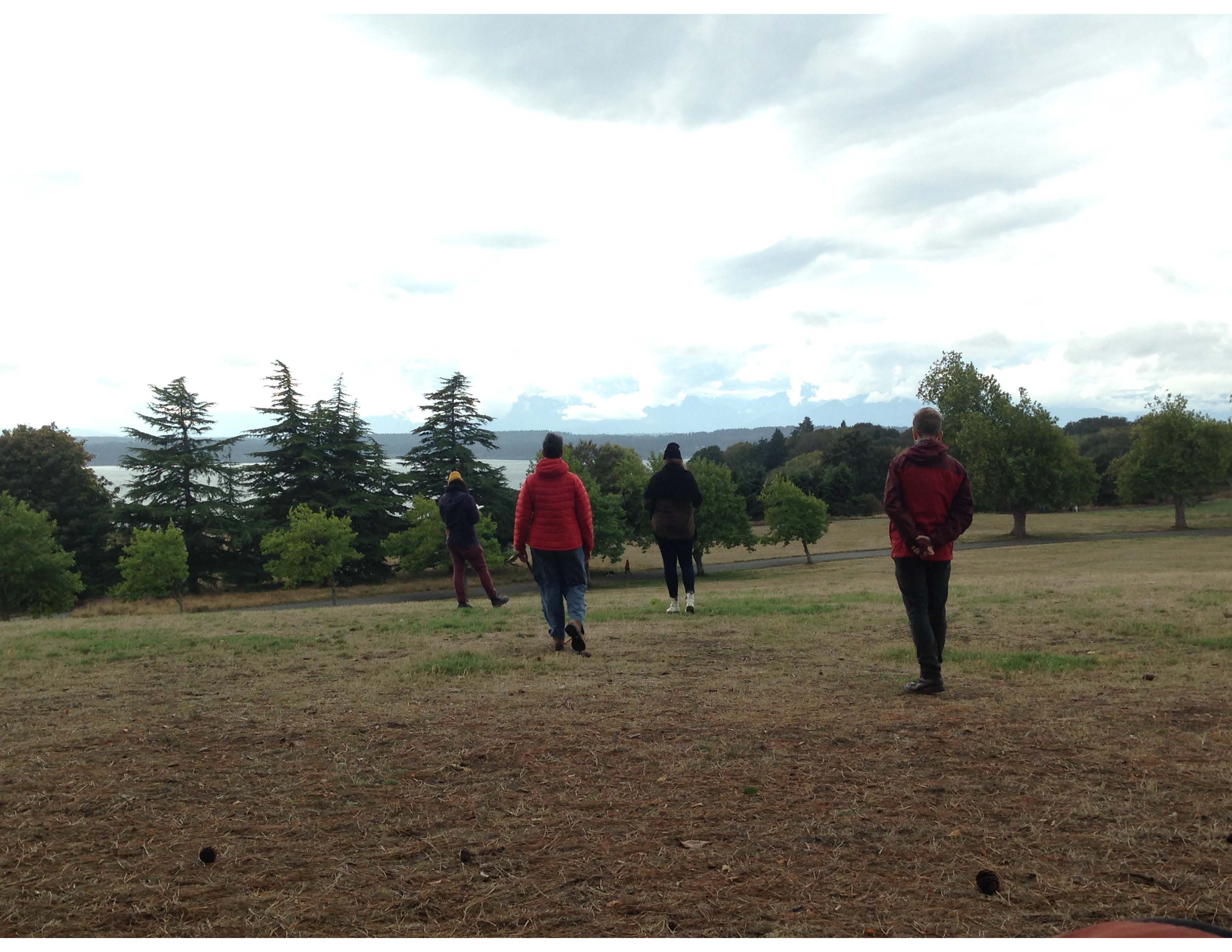
In the Neijing, the classical Chinese medical text, the spleen and stomach are the organs of Late Summer, a fifth and distinct season from the other four lasting roughly eight weeks from mid-August to mid-October. It's said the spleen rules one's capacity for opinions and ideas, while the stomach governs the voice and ability to sing. Other Late Summer associations are the sense of taste, sweetness in particular, the color yellow, humidity, stillness, and sympathy.
In 1992, the Croatian artist Mladen Stilinovic wrote In Praise of Laziness, a kind of manifesto accompanied by a large image of himself asleep in his bed. He had taken these pictures of himself in sleep in the years leading up to this writing. In part it reads: "My observation and knowledge of Western art has lately led me to a conclusion that art cannot exist anymore in the West. This isn't to say there is not any. Why cannot art exist anymore in the West? The answer is simple. Artists in the West are not lazy."
I heard this story secondhand: Min Tanaka, who describes his work an avant-garde crawling on the ground, said his interest in dance originated as a child with his desire to introduce a spoon to the sky.
This four-hour outdoor workshop explores languor and the nearly imperceptible motion at some meeting points; explores spleen and stomach, laziness and its friend making-things, gestures that bridge the microscopic to and from the telescopic, within the frame of you and your work.
Through writing and simple movement exercises aimed at finding the "still point of the turning/world . . . neither/flesh nor fleshless . . . neither from nor towards" (TS Eliot), we'll explore action from places of non-action and slow motion via velocity, and vice versa. We'll investigate definitions and perceptions of time, such as the time of cabinets, the time of snails, and language used for time from around the world at different points in history. We'll explore time and action by the senses of taste, touch, and sound.
*
FELT : synesthesia & imagination
Volunteer Park, Seattle, Washington
This felt sense at seeing the rose extends, because light in the DNA of my cells receives light frequencies of the flower as a hologram. - Mei-Mei Berssenbrugge, from "Hello, the Roses"
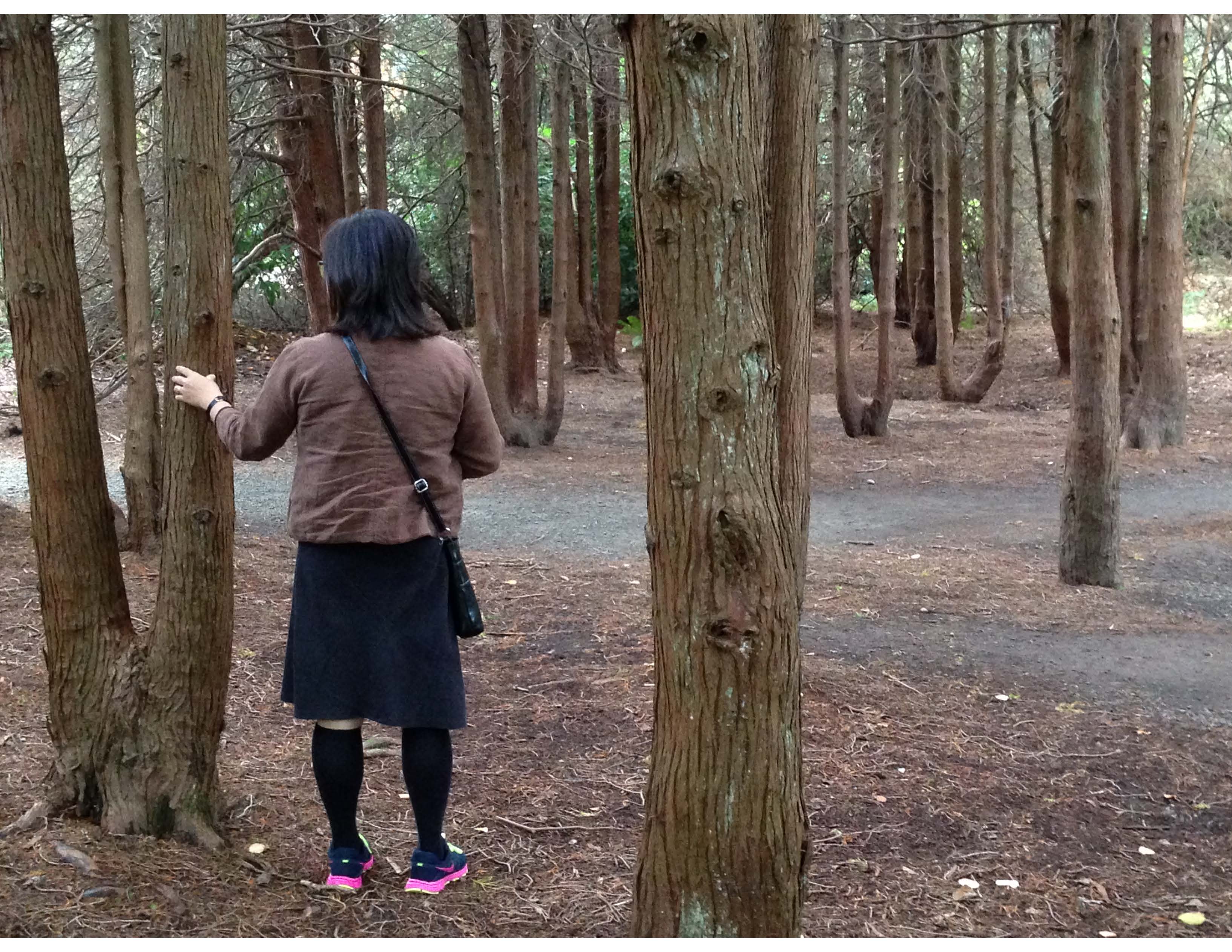
What is the architecture of the imagination? What gives it shape, and how are its doors and exits made? When does one sense become another and what does that disorientation yield? We will explore these questions and more in the context of Volunteer Park's water tower, sculpture and plant conservatory - and in neighboring Lake View Cemetery. We'll learn about love from the dead, about dying from plant life, about living from architecture. We will learn to see through the microscope of Isamu Noguchi's Black Sun, and see into the earth and stars through the telescope of the water tower. This is a one-day workshop for anyone wishing to explore their sense of creative motion and direction in the world to create intersections where there might seem to be none in the mind, in memory, and in the natural and the more made world surrounding us.
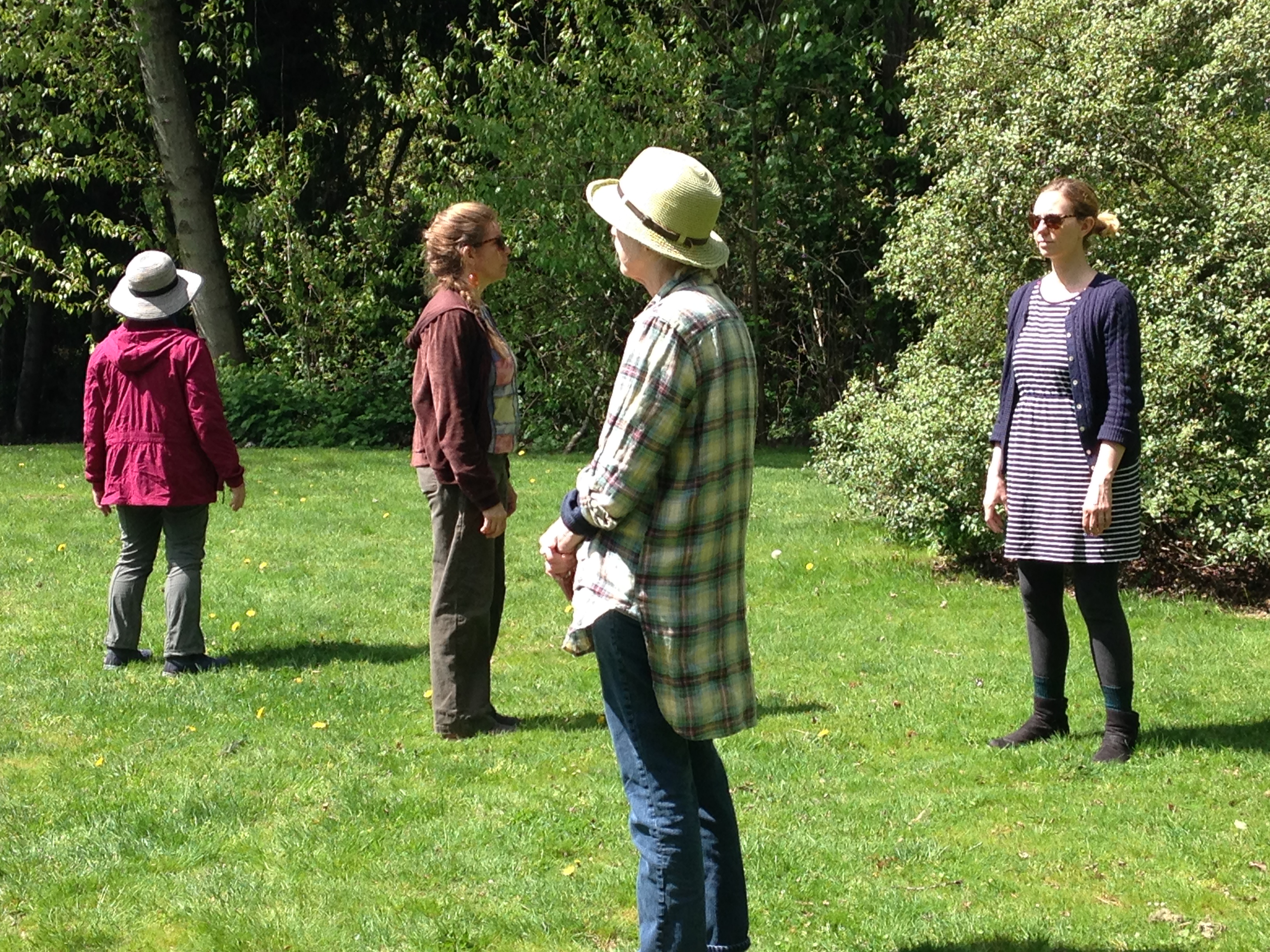
Manito Park, Spokane, Washington
When does one sense become another? What does confusion and disorientation between them yield? What is the felt sense and what does it have to do with imagination? What is the architecture of the imagination? What gives it shape, and how are its doors and exits made? We'll explore these questions and more in Manito Park and Botanical Gardens through writing and simple movement exercises aimed at exploring the park's architecture, plant conservatory, and its former life as a zoo. We'll learn about love from the lost, about dying from plant life, and about living from architecture. This workshop is for anyone wishing to explore their sense of creative motion and direction in the world.
*
SYNESTHESIA & POETRY
Canoe Club at the Wing Luke Museum, Seattle, WA
If I had some paints handy, I would mix burnt sienna and sepia for you as to match the color of a 'ch' sound . . . and you would appreciate my radiant 's' if I could pour into your cupped hands some of those luminous sapphires. - Vladimir Nabokov, from The Gift
This is a poetry workshop for artists interested in poetry. Though it's primarily a reading and writing class, it's open to anyone seeking a way to reframe and investigate their imagination. We'll read and consider the five senses, as well as the elusive sixth, through the work of George Oppen, Claire Denis, essential oils and spices, Arthur Rimbaud, Rebecca Solnit, Janet Cardiff, early silent films, Kazuo Ohno, Samuel Beckett, Thelonious Monk, and Ono No Komachi. We'll find ways of listening with our eyes and seeing and tasting with our ears, with antennae for the ways our work might extend past a single dimension.
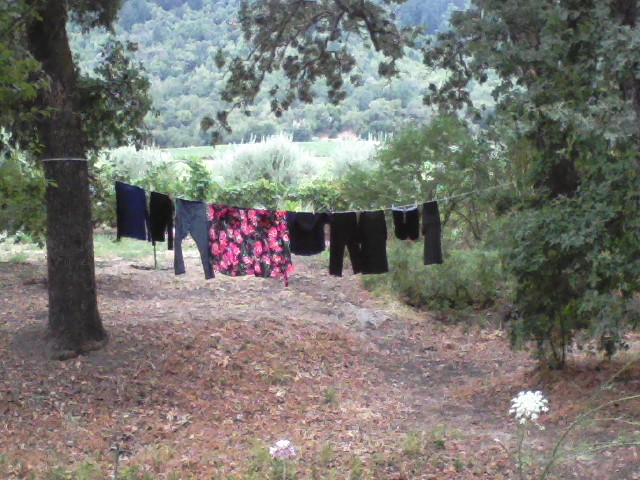
ABOVE/INSIDE : a wave occurs at the edge or surface
in Dudley Carter Park, Redmond, Washington
This is a workshop on imagination and the senses exploring the gesture of the wave in people and the environment. In The Book of a Hundred Hands, poet Cole Swensen describes the hand as "already interior," as "landscape," as "rising up from the sea." Merriam's tells us to wave means "to swing," that it's "of water;" that it can mean "to float, play, or shake in an air current : move loosely to and fro." In this four-hour outdoor workshop we'll travel along the Sammamish River Trail from Dudley Carter Park to explore the gesture of the wave in all its forms. How do we say hello and goodbye? Where and how do we wave? Is yours the wave of a beauty queen or a rip tide? Who and what waves back at you? What's the role of the space around things in waves and waving? We'll amplify our senses into compasses for newly defined magnetic fields.
*
These workshops and variations of them developed at the intersection of landscape, imagination, and language. They often sound like jokes that begin at the punchline, and sometimes look like the solar-system enactment/bar-closing scene from Bela Tarr's Werckmeister Harmonies. I've also created customized versions of workshops and experiences for individuals and small groups on request. These experiments have been happening irregularly since 2009.
*